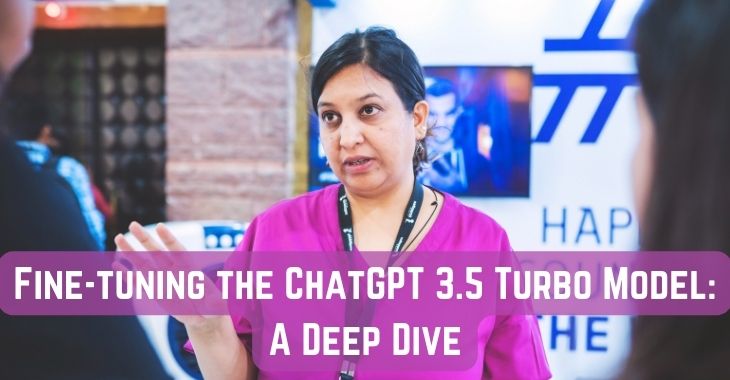
“Once again Saltmarch has knocked it out of the park with interesting speakers, engaging content and challenging ideas. No jetlag fog at all, which counts for how interesting the whole thing was."
Cybersecurity Lead, PwC

The ChatGPT 3.5 Turbo model by OpenAI has been a game-changer in the world of conversational AI. But what if you could make it even better? Enter fine-tuning. This article delves deeper into the intricacies of fine-tuning the ChatGPT 3.5 Turbo model, offering insights directly from OpenAI's recent updates.
OpenAI has recently announced the availability of fine-tuning for the GPT-3.5 Turbo model, with the promise of extending this feature to the much-anticipated GPT-4 model in the near future. This development empowers developers to customize models to better cater to specific use cases. Preliminary tests have indicated that a fine-tuned GPT-3.5 Turbo can rival, and in some instances surpass, the capabilities of the base GPT-4 model for certain specialized tasks. A significant highlight is OpenAI's commitment to data privacy, ensuring that data used for fine-tuning remains the sole property of the customer and is not utilized for training other models.
Why is Fine-tuning Crucial?
Since the launch of GPT-3.5 Turbo, there has been a surge in demand from developers and businesses to customize the model to offer unique experiences to their users. Fine-tuning addresses several key areas:
The Broader Implications of Fine-tuning
Fine-tuning is not just a technical advancement; it's a paradigm shift in how we approach AI models. By allowing developers and businesses to customize models, OpenAI is democratizing AI, ensuring it's not a one-size-fits-all solution but a tool that can be molded to fit specific requirements.
Challenges and Considerations
While fine-tuning offers numerous benefits, it's essential to approach it with a clear understanding of its challenges:
Step-by-Step Guide to Fine-tuning
Safety and Pricing
OpenAI places a high emphasis on safety. To maintain the model's inherent safety features, fine-tuning data undergoes scrutiny via the Moderation API and a GPT-4 powered system to identify any unsafe content.
In terms of costs, fine-tuning is bifurcated into training and usage costs. For instance, a GPT-3.5 Turbo fine-tuning job with a 100,000-token training file spanning three epochs would incur an approximate cost of $2.40.
The Road Ahead with GPT-4
With the imminent release of GPT-4, the AI landscape is poised for another significant transformation. GPT-4 promises to be more powerful and versatile than its predecessor. The combination of GPT-4's capabilities with fine-tuning can lead to unprecedented advancements in AI applications.
Fine-tuning the ChatGPT 3.5 Turbo model is an exciting venture, especially with the upcoming release of GPT-4. By familiarizing yourself with the fine-tuning process now, you'll be better prepared to harness the full power of future models. Whether you're looking to improve output formatting, set a custom tone, or simply save on costs, fine-tuning offers a promising solution.
For those keen on exploring further, OpenAI's community and resources offer a treasure trove of knowledge, ensuring that the journey of fine-tuning is well-guided and informed.
Have questions or comments about this article? Reach out to us here.
Banner Image Credits: Attendees at Great International Developer Summit

“Once again Saltmarch has knocked it out of the park with interesting speakers, engaging content and challenging ideas. No jetlag fog at all, which counts for how interesting the whole thing was."
Cybersecurity Lead, PwC

“Very much looking forward to next year. I will be keeping my eye out for the date so I can make sure I lock it in my calendar."
Software Engineering Specialist, Intuit

“Best conference I have ever been to with lots of insights and information on next generation technologies and those that are the need of the hour."
Software Architect, GroupOn

“Happy to meet everyone who came from near and far. Glad to know you've discovered some great lessons here, and glad you joined us for all the discoveries great and small."
Web Architect & Principal Engineer, Scott Davis

“Wonderful set of conferences, well organized, fantastic speakers, and an amazingly interactive set of audience. Thanks for having me at the events!"
Founder of Agile Developer Inc., Dr. Venkat Subramaniam

“What a buzz! The events have been instrumental in bringing the whole software community together. There has been something for everyone from developers to architects to business to vendors. Thanks everyone!"
Voltaire Yap, Global Events Manager, Oracle Corp.